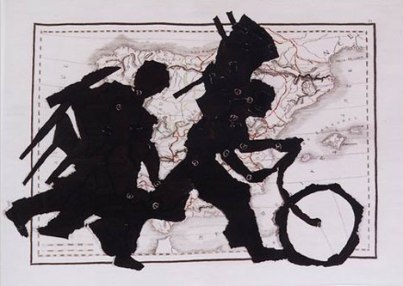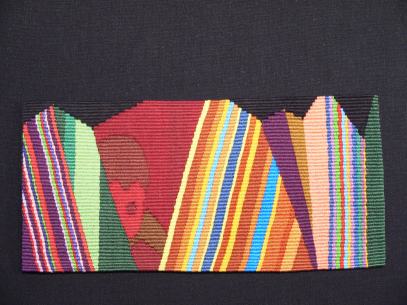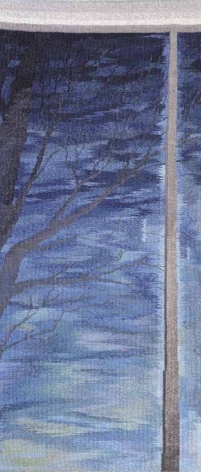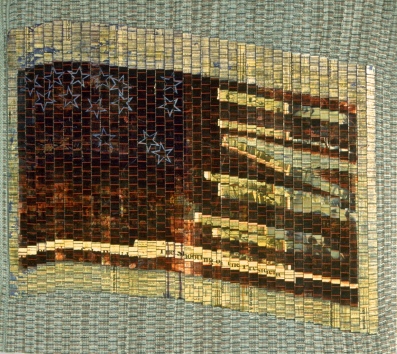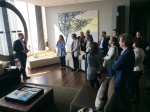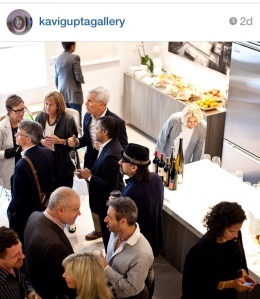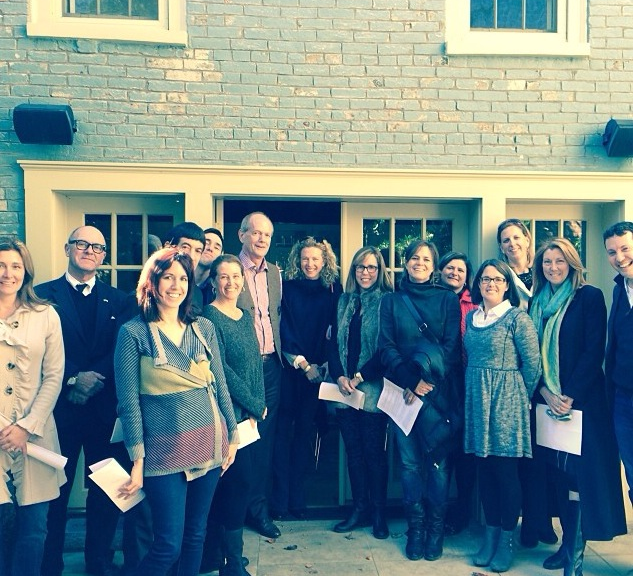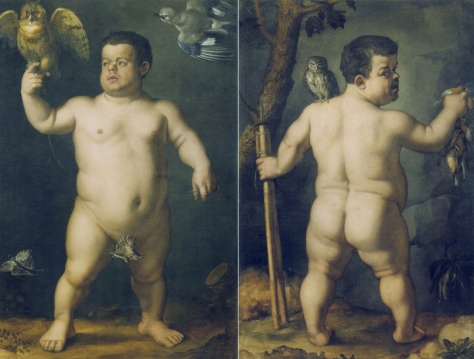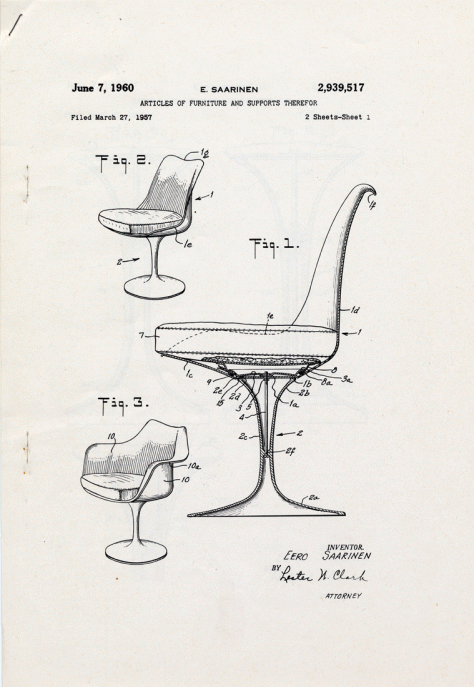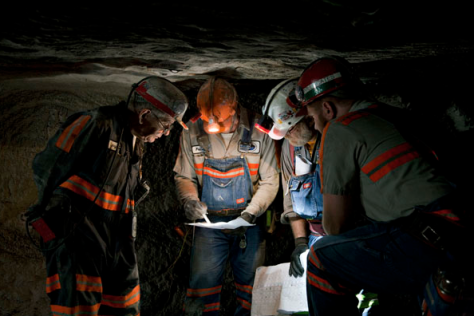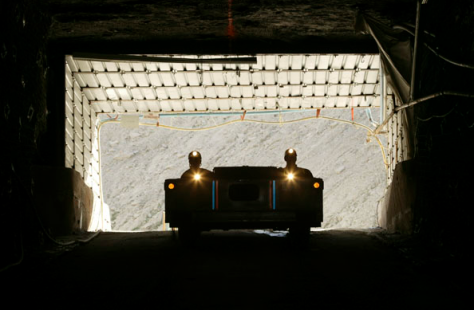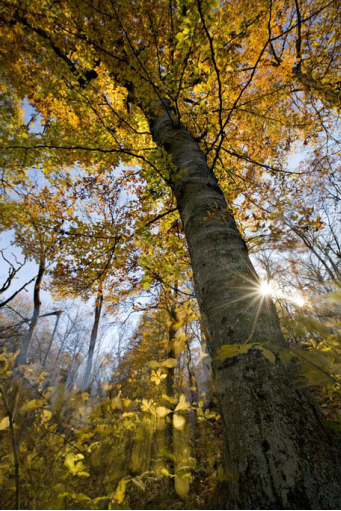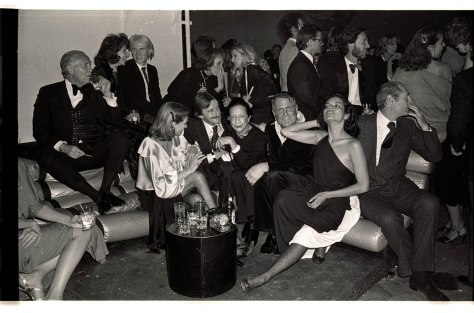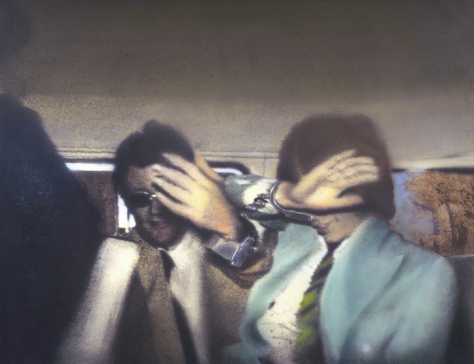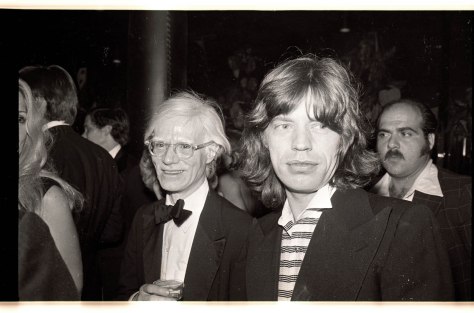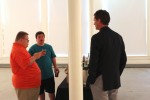By: Ramona Lindsey, director of education
What’s the best way to spend a week out of school? Is it sunbathing on a white sandy beach? What about watching hours of Neflix? Maybe it’s hours of tormenting a brother or sister? Well, KMAC thinks the best way to spend the week is creating wearable art with a locally recognized fashion designer. During the week of April 4th-8th, Frances Lewis, founder and lead designer of Ann De Evelyn, will work with campers (grades 4-8) at KMAC Camp Couture 2016.
KMAC Camp Couture is a weeklong opportunity to learn how to create like a KMAC Couture Designer. KMAC Couture: Art Walks the Runway is a Louisville favorite event where local artists and designers create wearable art from the most unlikely materials. Guests of this elaborate and unique fashion show have watched models dressed in high fashions made from dried fruit, broken dishes, birthday cards, and even garbage. Frances Lewis is a three year veteran of KMAC Couture. Her dress made of hair extensions is featured on the KMAC Couture 2016 poster.
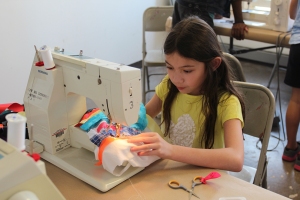
Camp Couture 2016 will be the first time that a veteran KMAC Couture artist will guide campers through the process of making a wearable piece of art. Campers will work in two-person design teams to make a complete look that will be showcased during KMAC Couture 2016. Each team will have 5 days to transform a basic mannequin and muslin into something totally outrageous yet glamorous. Here’s what will happen each day:
Day 1: Create A Fashion House with Your Partner. You will come up with a logo, signature design style, & mood boards.
Day 2: Learn Stitching Basics by Hand and Machine. Use your stitches to design a custom bag with hand appliquéd screenprinted motifs.
Day 3: Meet Your Model and Follow a Pattern. You will create the perfect model using a mannequin that will wear a circle skirt or shorts that you sew.
Day 4: Make It Couture. KMAC Couture means adding the unthinkable to your skirt and mannequin to make it completely artsy.
Day 5: Take it Over the Top. Use the skills you learned to create textile jewelry that will rocket your look to the extreme.
Each camper will go home at the end of the week with items they created as individuals and a team. In addition, they will have the opportunity to share ideas, stories, and challenges with other young people who are wild about fashion. KMAC Camp Couture 2016 is sure to be an unforgettable experience where campers enjoy the ultimate combination of fashion and art. Online registration is open but there is space for only 18 campers. I hope to meet you at KMAC Camp Couture 2016.
For more information, or to register, click here. With questions or concerns, email Assistant Director of Education Sarah McCartt-Jackson at sarah@kmacmuseum.org.


